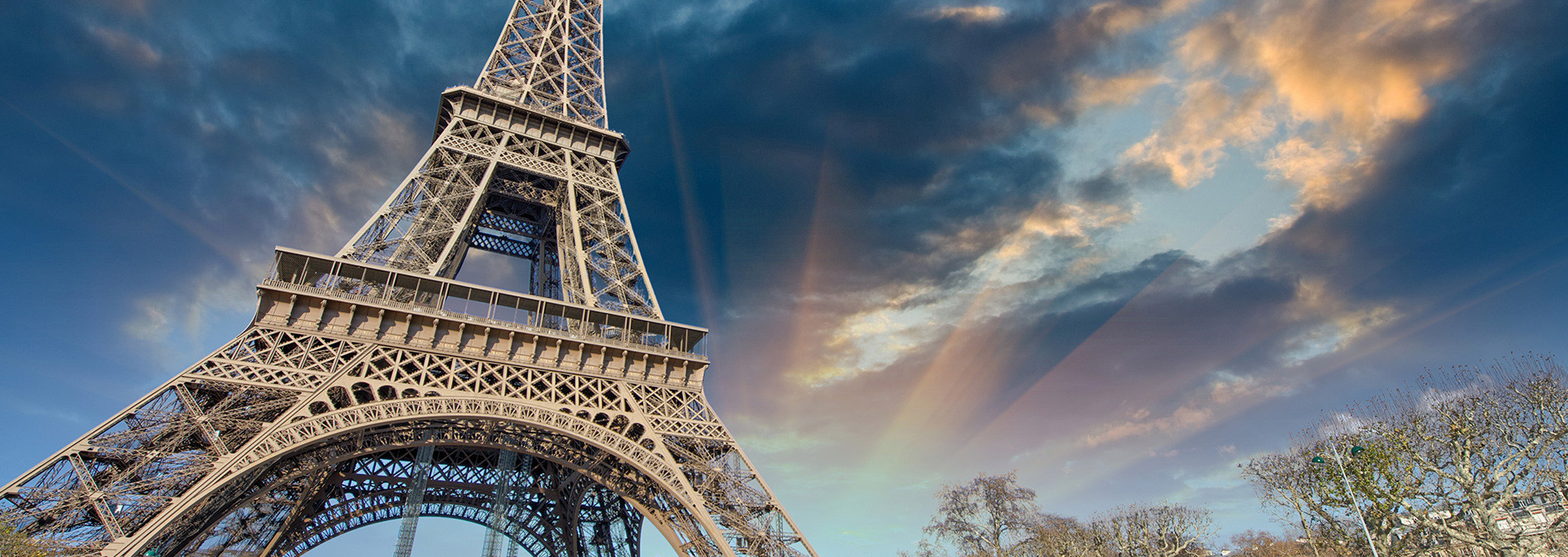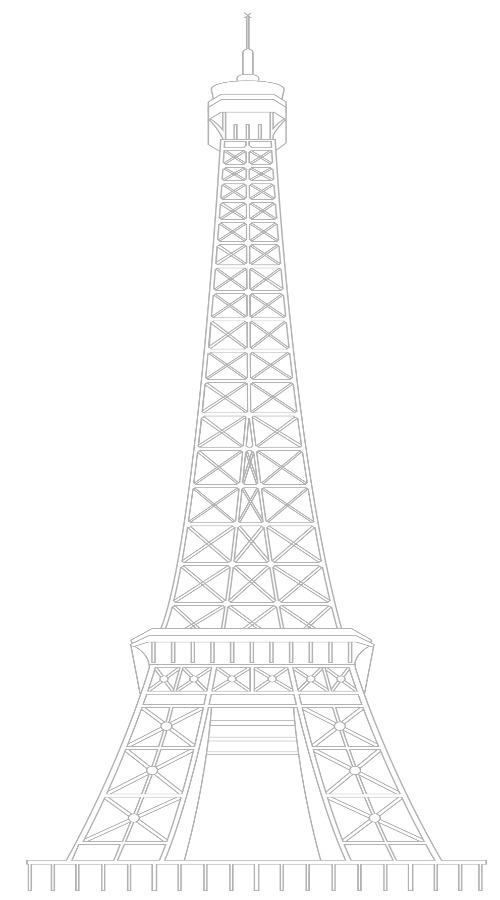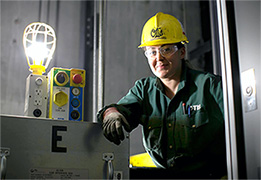Eiffel Tower | Otis Global Projects

Eiffel Tower
Paris, France
Bringing millions of passengers to the
perfect view of Paris
In creating his famous tower, Gustave Eiffel demonstrated both his engineering genius and a firm grasp of the emerging aesthetic of the industrial age. Otis engineers had to be inventive as well, finding new ways to design the tower’s lift systems – not just once, but twice, a century apart.
The French first turned to Otis before the tower opened in 1889. They needed lifts for the north and south curved pillars to carry visitors to the second level – without interfering with the tower’s iconic silhouette.
Constructing lifts to the first level was relatively straightforward: The pillars’ legs were wide and straight enough for a conventional system. Installing lifts to the second level was a different matter, given the sharp curvature involved. No French company was willing to take on the complex job.
Otis engineers designed two huge hydraulic cable lifts that ran on rail tracks. The big, beautiful machines became tourist attractions themselves.
In the 1980s, the French again turned to Otis, this time to re-engineer the tower’s entire lift system as part of a major renovation.
The lifts to the top presented the biggest challenge. Otis engineers used computer modelling to analyze the many difficulties, including tower sway and winds that can reach 62 miles per hour.
They came up with a radical new system: two duolift™ lifts using the longest open-air run ever covered by a lift – 525 ft. Each lift consists of two cabs, which act as each other’s counterweight: When one cab goes up, the other comes down.
Galvanised cables and anti-icing devices on the cars allow the lifts to operate year-round, even under severe weather conditions.
In 2001, we were contracted to modernize the two duolifts during a major renovation, and in 1993 we replaced the elevator cars. 30 years later, we are proud to be selected for a major machinery overhaul.
Ride along in the Eiffel tower with Otis


~ 4
TONS
Weight reduction
will be achieved with lighter-weight replacement materials

~3
MINUTES
Ride to the top

14
UNITS
Maintained by Otis

18
MONTH
On-going modernization contract
Around the world
The elevators are indispensable to the monument and subject to harsh conditions
Their annual journeys combined are equal to two and half times world's circumference, or more than 103,000 kilometers.
Nine machines
Today, a total of nine Otis machines are in use at the Eiffel Tower
Two duolifts, a private elevator for clients of the Jules Verne restaurant, a dumbwaiter, a platform for wheelchair access, and four freight elevators.
Quick facts about the Eiffel Tower
The Eiffel Tower was designed by engineer Gustave Eiffel’s company for the 1889 World Exhibition, celebrating the 100-year anniversary of the French Revolution
Its construction in two years, two months and five days was an undeniable technical and architectural achievement. A symbol of technological prowess, at the end of the 19th century it was a demonstration of French engineering personified by Gustave Eiffel and a defining moment of the industrial era.
-
1 Construction began
July 1, 1887
-
2 Number of rivets
2.5 million
-
3 Weight
10.1k metric tons
-
4 Visitors during 1889
250 million
-
5 Visitors each year
7 million
-
6 50
Engineers




